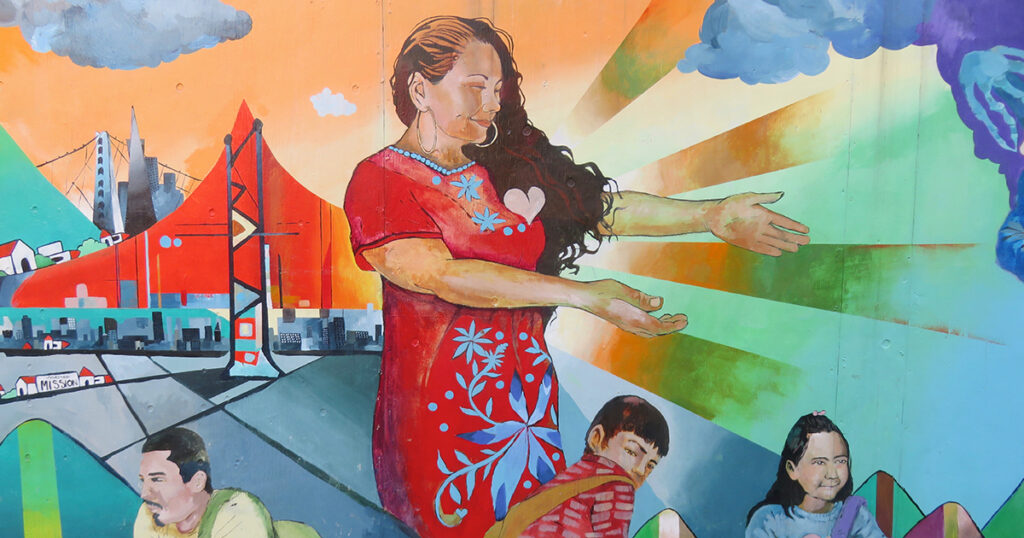
LatinoLand: A Portrait of America’s Largest and Least Understood Minority by Marie Arana; Simon & Schuster, 576 pp., $32.50
Marie Arana’s sprawling portrait of Latinos in the United States is rich and nuanced in its depiction of the diversity of “the least understood minority.” Yet LatinoLand is regrettably old-fashioned and out-of-date. For starters, Hispanics aren’t really misunderstood anymore; our stories are told frequently and insistently in the news media and literature, on television and film, and have become an integral part of school curricula all over the land. Nor are we without political representation, although our leaders, less numerous than they should be, are generally a sorry bunch. Just look at George Santos.
The inaugural literary director of the Library of Congress, Arana builds her narrative by accumulation, offering brief, poignant portrayals of dozens of luminaries, from Spanish explorers to activists, athletes, entrepreneurs, musicians, teachers, scientists, religious leaders, and so on. (There is one of me.) At various points, the name dropping feels heavy-handed, without the scaffolding of insight to back it up. Happily, she highlights the lives of lesser-known but equally significant people among the country’s 62.1 million Latinos, from single mothers struggling to survive to DREAMers rightfully advocating for a place in their own country to laborers of every type. There are almost twice as many Hispanics in the United States as Canadians in Canada.
Arana spends a considerable portion of her book wondering what makes Latinos a community. But the question itself, fashionable in the 1990s, now feels trite. The answer is not to be found in race, ideology, or language. The fact is, we Latinos don’t seem to care about unity, or about what makes us different. We are a centrifugal entity that recalls Blaise Pascal’s famous sphere, its “center everywhere” and its “circumference nowhere.” By the year 2050, according to the Pew Research Center, 128 million Hispanics will be living in the United States—a number equal to about 29 percent of the overall population, compared with 14 percent in 2005. So what? The United States already has been almost fully Hispanicized. When you do your banking, the first language alternative after English is always Spanish. So what? As a nation, we are neither kinder nor gentler.
Among Arana’s previous books is a biography of Simón Bolívar, the libertador of South America, who hoped to unify the region in political terms. Instead, he died, sour and regretful, in northern Colombia in 1830. Indeed, our own ancestry in Latin America proves that unity is aspirational. We have taken longer than any other minority, with the exception of Black people, to enter the middle class, but as cities such as Los Angeles, San Antonio, and Miami attest, we no longer exist en la orilla, on the edge. We populate the whole spectrum: almost 60 percent of the nation’s incarcerated population is Latino, yet we also have a Latina on the Supreme Court. Several leading actors in the Star Wars universe are Latino, and in Hamilton, one of the most celebrated Broadway shows of all time, we have a show about a Founding Father, featuring a diverse cast, that was created by a Puerto Rican. The mother and daughter in Barbie who befriend the doll in the real world are Latinas. And almost every college, at least those with a sense of currency, has a Latino Studies section. Is this not success?
I am a Yiddish-speaking Jew born in Mexico who immigrated to the United States in the mid-’80s. That was a time of alienation for Latinos. The category Hispanic had recently been added to the U.S. Census under the Republican Nixon administration. The choice generated a backlash, eventually giving place to other terms, like Latino/Latina, Mestizo/Mestiza, and the abominable Latin@ and Latinx. But things have changed. We are outsiders no more. As the first quarter of this century wraps up, even the question of assimilation is outmoded. The buzz these days is whether minorities, rather than joining the status quo, might be better served by resisting integration. Being a minority gives you rizz, so why lose it?
W. E .B. Du Bois wrote that the 20th century was defined by the color line—and we Latinos, with our varied racial spectrum, were subject to it. But our current century is already about immigration, driven in large part by climate change and economic strife. Again, Latinos are central protagonists. Ignore, for a moment, the U.S.-Mexico border. Instead, just consider the number of Venezuelans arriving by bus or plane in New York City in recent months. Immigration is reshaping America in essential ways—and it is redefining Latinos, too, even those oblivious to the current plight.
No doubt we Latinos are acculturating. Arana, originally from Lima, is herself a prime example. Or better, her relatives are. She includes a confession in the last pages of LatinoLand. She asks her older sister Vicky how many Latina friends she has. The answer: “None, apart from you.” Vicky doesn’t check the Hispanic/Latino box on questionnaires. She tells Arana that as far as she is concerned, she is a white American. Arana then poses the same question to her nephew and nieces. The answer is the same: not only do they not socialize with Latinos, they also reject the label for themselves. The journey of adjustment, then, has succeeded. The members of Arana’s own family are Americans, who somewhere along the way seem to have shed their ancestry.
The one aspect to which Arana pays insufficient attention is language. To me, this is the most exciting revolution fostered by Latinos. I refer not only to Spanish as a minority language but also to its Americanized form: Spanglish. Just enter any restaurant kitchen, any courtroom, any public school classroom. Or pay attention to radio, TV, or the internet. We not only narrate our lives in Spanglish, we are Spanglish.
For all its patient research and good will, LatinoLand is proof that scholarship of today’s Latino community is in desperate need of new ideas.


